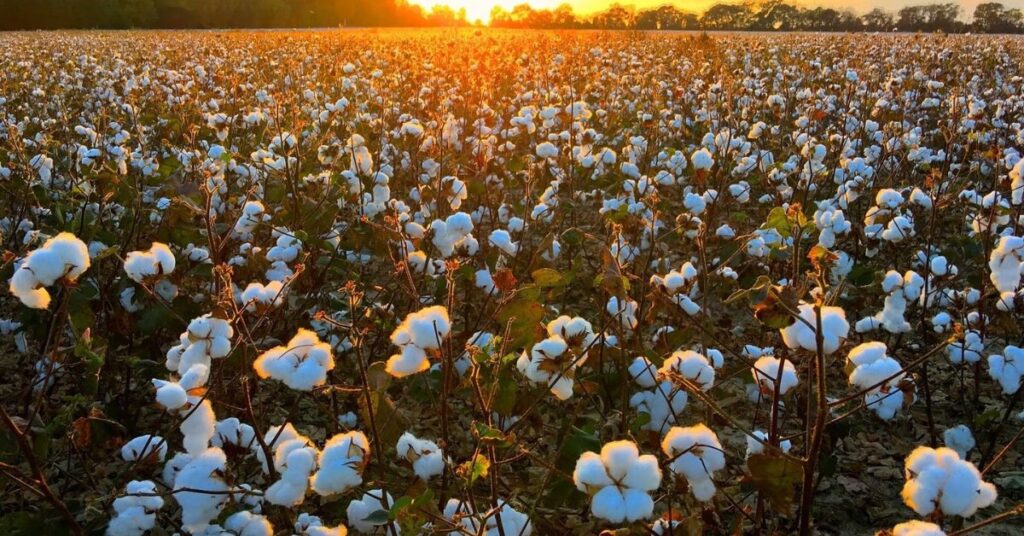Have you ever wondered what makes cotton fields so essential to our everyday lives? How do they contribute to global agriculture and the economy? Cotton fields have a rich history and play a critical role in the production of one of the world’s most versatile natural fibers. This article will take you through the journey of cotton cultivation, from planting seeds to harvesting, and explore the impact of cotton fields on the environment, economy, and global trade.
Understanding Cotton Fields: What Are They and Why Are They Important?
Cotton fields are agricultural lands dedicated to growing cotton plants, which produce soft, fluffy fibers that are used to make textiles. These fields require specific climatic conditions to thrive, including warm temperatures, adequate sunlight, and moderate rainfall. Cotton is typically grown in regions with long frost-free periods, such as parts of the southern United States, India, China, and several countries in Africa.
The importance of cotton fields extends beyond the fibers they produce. Cotton is a crucial crop for many economies, supporting millions of jobs in farming, textile manufacturing, and trade. Cotton fibers are used to make a wide range of products, from clothing and bed linens to industrial materials. But what does the process of cultivating cotton involve, and how has it evolved over time?
How is Cotton Cultivated in Cotton Fields?
The cultivation of cotton is a detailed process that requires careful planning and the right environmental conditions. Understanding this process gives insight into why cotton fields are so valuable.
1. Planting Cotton Seeds
- The journey of a cotton field begins with planting cotton seeds. Farmers typically plant seeds in the spring when temperatures warm up, ensuring that young cotton plants receive enough heat to grow.
- The seeds are planted in rows, and the spacing between plants is critical for allowing sufficient room for growth. Farmers use machinery to plant large areas quickly and efficiently, which is crucial for commercial cotton production.
2. Growth and Development of Cotton Plants
- After planting, cotton plants take about five to six months to mature. During this time, they require consistent care, including watering, fertilization, and protection from pests. Cotton fields need adequate irrigation, especially in regions with limited rainfall, to ensure that the plants receive enough moisture to grow.
- Cotton plants go through different growth stages, from forming flower buds (called “squares”) to blooming flowers that eventually turn into cotton bolls. The bolls contain the cotton fibers that are harvested and processed into textiles.
3. Harvesting Cotton
- Harvesting is a critical phase in the life of a cotton field. In many countries, cotton is harvested using machinery that removes the cotton bolls from the plants efficiently. In some regions, where machinery is not as readily available, manual labor is still used to pick cotton.
- The harvested cotton is then processed to separate the fibers from the seeds, a process known as “ginning.” The fibers are baled and sent to textile mills for further processing, while the seeds can be used for oil production or as feed for livestock.
The Economic Impact of Cotton Fields
Cotton fields are more than just a part of the agricultural landscape; they are a significant contributor to the global economy. Cotton is one of the most traded commodities, and the economies of several countries depend heavily on its cultivation and export. But what makes cotton fields such a crucial economic asset?
1. Jobs and Livelihoods
- Cotton fields provide employment for millions of people worldwide, particularly in rural areas where other job opportunities may be limited. From planting and tending to cotton plants to harvesting and processing, the industry supports a wide range of jobs.
- In countries like India and the United States, cotton farming is a vital part of the agricultural sector, contributing to local economies and providing a source of income for many families.
2. Contribution to Global Trade
- Cotton is a highly sought-after commodity in the global market, with countries like China, India, and the United States being major producers and exporters. Cotton exports help generate foreign exchange for these countries, supporting their trade balance.
- The international trade of cotton also creates a complex supply chain that connects cotton growers to textile manufacturers, retailers, and consumers across the world. This global interconnectedness makes cotton fields an essential part of the textile and fashion industry.
3. Supporting the Textile Industry
- Cotton fields supply the raw materials for the textile industry, which is a major sector in many economies. The fibers from cotton fields are processed into fabrics that are used to create clothing, home furnishings, and various industrial materials.
- The durability, breathability, and softness of cotton make it a preferred choice for a wide range of products. As such, the demand for cotton continues to drive the expansion of cotton fields in suitable agricultural regions.
Environmental Considerations of Cotton Fields
While cotton fields play a significant role in the economy, they also have environmental impacts that need to be managed responsibly. Understanding the environmental challenges associated with cotton cultivation can help in developing more sustainable practices.
1. Water Usage
- Cotton is a water-intensive crop, which means that cotton fields require significant amounts of water for irrigation, especially in arid regions. This high water demand can strain local water resources, particularly in areas where water is already scarce.
- To address this issue, some farmers are adopting drip irrigation and other water-saving techniques to reduce water usage while maintaining high yields. These practices help balance the need for water with the sustainability of local water sources.
2. Pesticides and Soil Health
- Cotton fields often require the use of pesticides to protect the plants from pests and diseases. However, excessive pesticide use can lead to soil degradation and harm beneficial insects and wildlife in the surrounding areas.
- Sustainable farming practices, such as integrated pest management (IPM), can help minimize the environmental impact of pesticides. IPM focuses on using natural predators, crop rotation, and targeted pesticide applications to reduce the need for chemical inputs.
3. Organic Cotton: A Sustainable Alternative
- In response to the environmental challenges associated with conventional cotton farming, some farmers have turned to growing organic cotton. Organic cotton fields use natural fertilizers, avoid synthetic pesticides, and focus on maintaining soil health through crop rotation and other sustainable practices.
- Organic cotton is becoming increasingly popular with consumers who are looking for eco-friendly products. While organic cotton typically has a higher price point, it offers a more sustainable option for those concerned about the environmental impact of their purchases.
The Future of Cotton Fields: Innovations and Challenges
The future of cotton fields depends on the ability of farmers and researchers to address current challenges and adopt new technologies. What does the future hold for cotton cultivation, and how can innovation shape this important industry?
1. Biotechnology and Genetic Modification
- Advances in biotechnology have led to the development of genetically modified (GM) cotton varieties that are more resistant to pests and can withstand harsher environmental conditions. These GM cotton plants can reduce the need for chemical pesticides and increase yields.
- While GM cotton has been adopted in many countries, it also faces challenges, including regulatory hurdles and concerns from consumers about genetically modified crops. Balancing these factors will be key to the future growth of GM cotton fields.
2. Precision Agriculture
- Precision agriculture uses technology like drones, GPS mapping, and soil sensors to optimize the management of cotton fields. These technologies allow farmers to monitor crop health, manage water usage, and apply fertilizers more accurately.
- By using precision agriculture, farmers can improve the efficiency of cotton cultivation and reduce waste, making it easier to manage large cottonfields sustainably.
3. Adapting to Climate Change
- Climate change poses a significant challenge to cotton’fields, as changing weather patterns can impact the growing conditions for cotton plants. Adapting to these changes will require farmers to develop more resilient crop varieties and adjust their farming practices.
- Research into drought-resistant cotton varieties and innovative irrigation methods will play a crucial role in ensuring the future success of cotton fields in the face of climate change.
Conclusion:
Cotton fields are a cornerstone of global agriculture, providing the raw materials for textiles, supporting economies, and shaping the way we dress and live. Understanding the intricacies of cotton cultivation, the economic impact, and the environmental considerations of cotton fields helps us appreciate the role they play in our daily lives. As the industry evolves, embracing sustainable practices and technological advancements will ensure that cotton fields continue to thrive and contribute to a better future for both farmers and consumers.







